 Lars Anderson, author of Carlisle vs. Army: Jim Thorpe, Dwight Eisenhower, Pop Warner, and the forgotten story of football’s greatest battle, has just had The First Star: Red Grange and the barnstorming tour that launched the NFL published by Random House. This book follows on the heels of Gary Poole’s biography of Harold Edward Grange. Anderson delves more into the early days of Grange’s professional career — the barnstorming tour that took Grange east to New York, south to Florida, and, finally west to the Pacific coast. The barnstorming tour was brutal and likely contributed to Grange’s shortened injury-laden career. Grange finished playing college ball on November 21, 1925. Five days later he was playing pro-ball on Thanksgiving, much to the shock and dismay of many. The barnstorming tour began after Grange helped the Bears for two games in Chicago as their season was winding down. The tour went through St. Louis, Philadelphia, New York, Washington, Boston, Pittsburgh, and Detroit, over an eleven-day period, before returning to Chicago for another home game on December 13th. Then the tour, beginning on Christmas Day, 1925, took a second leg of nine games to Coral Gables, Florida, ending in Seattle on Jan. 31, 1926. The allure of the barnstorming tour and its profits caused tension between Grange, his manager C. C. Pyle and George Halas. By the next season Pyle had created a start-up rival football league with Grange as its, unbeknownst, injured star. The plan failed and Grange returned, somewhat hat-in-hand, to Halas and his Chicago Bears — never really the same physically. Grange had changed professional football, but it also taken its toll personally.
Lars Anderson, author of Carlisle vs. Army: Jim Thorpe, Dwight Eisenhower, Pop Warner, and the forgotten story of football’s greatest battle, has just had The First Star: Red Grange and the barnstorming tour that launched the NFL published by Random House. This book follows on the heels of Gary Poole’s biography of Harold Edward Grange. Anderson delves more into the early days of Grange’s professional career — the barnstorming tour that took Grange east to New York, south to Florida, and, finally west to the Pacific coast. The barnstorming tour was brutal and likely contributed to Grange’s shortened injury-laden career. Grange finished playing college ball on November 21, 1925. Five days later he was playing pro-ball on Thanksgiving, much to the shock and dismay of many. The barnstorming tour began after Grange helped the Bears for two games in Chicago as their season was winding down. The tour went through St. Louis, Philadelphia, New York, Washington, Boston, Pittsburgh, and Detroit, over an eleven-day period, before returning to Chicago for another home game on December 13th. Then the tour, beginning on Christmas Day, 1925, took a second leg of nine games to Coral Gables, Florida, ending in Seattle on Jan. 31, 1926. The allure of the barnstorming tour and its profits caused tension between Grange, his manager C. C. Pyle and George Halas. By the next season Pyle had created a start-up rival football league with Grange as its, unbeknownst, injured star. The plan failed and Grange returned, somewhat hat-in-hand, to Halas and his Chicago Bears — never really the same physically. Grange had changed professional football, but it also taken its toll personally.
Monthly Archives: December 2009
Alan Loy McGinnis, Friend Indeed
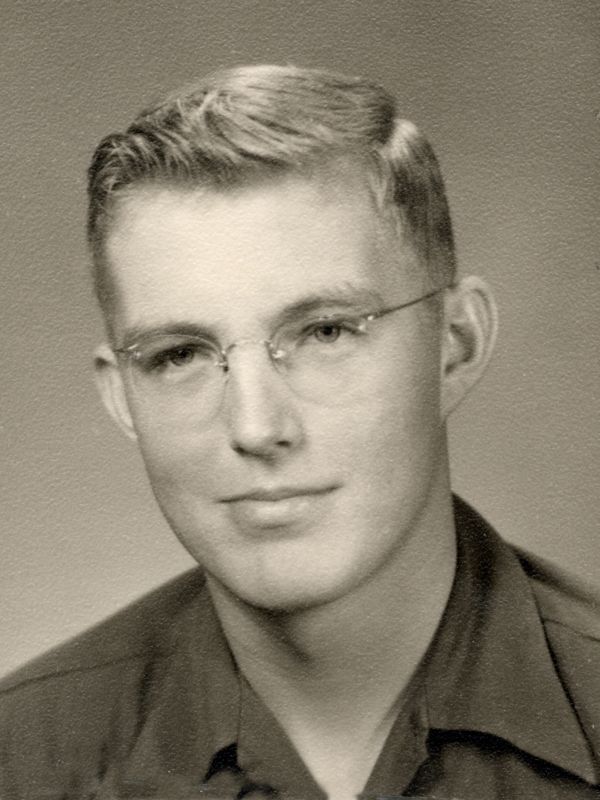 It is prescient that Alan Loy McGinnis, the man who wrote the book on friendship, grew up in a happy, friendly family among the Society of Friends (also known as Quakers), in Friendswood, Texas. Accepting Christ at age eleven during a 1944 camp meeting, McGinnis initially hoped to pursue a business career like his father. But as he matured in the faith he felt the call of God, and consequently enrolled in Bible school. He first attended Bob Jones University, then transferred to Pacific Bible College (now called Asuza Pacific), then moved to Wheaton College, completing his undergraduate courses in 1955. Pacific’s president, Dr. Cornelius Haggard, comments in a 1952 letter to Wheaton’s registrar, Dr. Enock Dyrness, that this bright chap “…is an unusually fine Christian gentleman, thoroughly dependable and trustworthy. Intellectually, he is far above the average…his social abilities indicate outstanding leadership.”
It is prescient that Alan Loy McGinnis, the man who wrote the book on friendship, grew up in a happy, friendly family among the Society of Friends (also known as Quakers), in Friendswood, Texas. Accepting Christ at age eleven during a 1944 camp meeting, McGinnis initially hoped to pursue a business career like his father. But as he matured in the faith he felt the call of God, and consequently enrolled in Bible school. He first attended Bob Jones University, then transferred to Pacific Bible College (now called Asuza Pacific), then moved to Wheaton College, completing his undergraduate courses in 1955. Pacific’s president, Dr. Cornelius Haggard, comments in a 1952 letter to Wheaton’s registrar, Dr. Enock Dyrness, that this bright chap “…is an unusually fine Christian gentleman, thoroughly dependable and trustworthy. Intellectually, he is far above the average…his social abilities indicate outstanding leadership.”
McGinnis continued his studies at Princeton University, Fuller Theological Seminary and Columbia University, acquiring degrees in theology and psychology. Ordained as a pastor in the United Presbyterian denomination, he was also a licensed marriage, child and family counselor. Tragedy erupted for him in 1974 when, after serving congregations in New Jersey, Illinois and California, his twenty-year marriage ended. Shattered, he lent serious consideration to his own emotions. “After that experience,” he recalls, “I wanted to learn more about love…I found that the basic principles of friendship were at work in all intimate relationships: children, mate, parents.” His research led to The Friendship Factor (1979), which received the 1980 Campus Life Award as Best Book of the Year in the General Interest Category. Shortly after, McGinnis, certain that everyone has the ability to cultivate meaningful relationships, embarked on the lecture circuit, appearing regularly on radio and television, while also conducting workshops for large churches and motivational seminars for Merrill Lynch, General Motors, IBM, Metropolitan Life and the Marine Corps. Exploring similar themes, he followed-up with The Romance Factor (1982), Bringing Out the Best in People (1985), Confidence (1987), The Power of Optimism (1990) and The Balanced Life (1997), all written within a Christian context, but not explicitly religious in approach. His articles were published in The Saturday Evening Post, Cosmopolitan, Good Housekeeping, Guideposts and Christian Herald.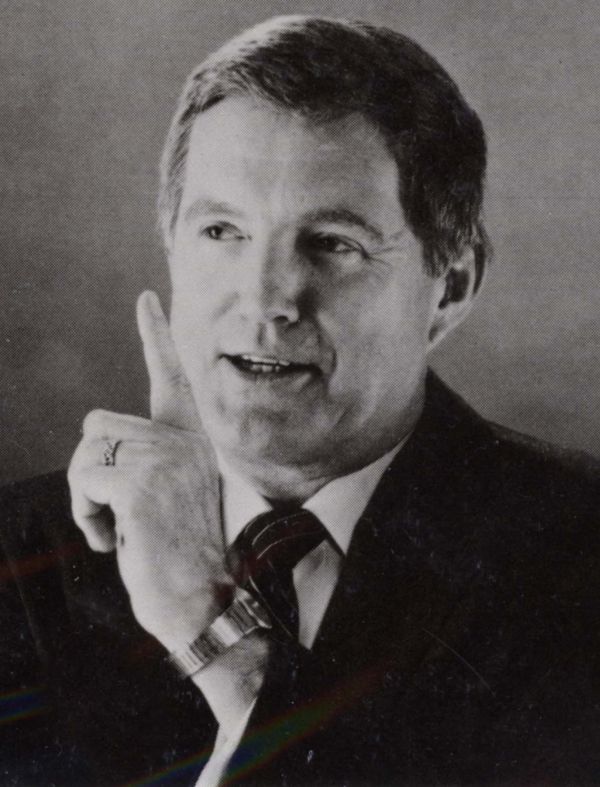
The first edition of The Friendship Factor (revised 2004) sold more than 350,000 copies, and has been translated into Finnish, German, Spanish, Dutch, Chinese and Afrikaans.
In addition to speaking and writing, Dr. Alan Loy McGinnis co-founded and directed Valley Christian Counseling Center in Glendale, California. The clinic attempts to combine the procedures of medicine with the principles of the Christian faith, desiring to heal the whole person, employing techniques pioneered by Dr. Paul Tournier. At the time of his death in 2005 at 72, McGinnis had been married to his second wife, Diane, for 31 years.
Let not man put asunder…
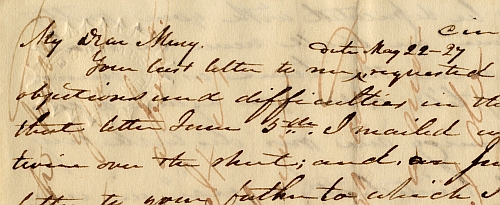 Throughout the summer of 1838 Jonathan Blanchard had thoughts of marriage on his mind, particularly, the thought of Mary Avery Bent who was residing in her natal Middlebury, Vermont after spending time as a teacher in Pennsylvania and Alabama. The correspondence between Jonathan and Mary, as well as between Jonathan and Mary’s father clearly gives one the sense of significance and weightiness of the prospect of their future together. In this time and place marriage was not entered into lightly and contrasts greatly with today’s expendable marriages.
Throughout the summer of 1838 Jonathan Blanchard had thoughts of marriage on his mind, particularly, the thought of Mary Avery Bent who was residing in her natal Middlebury, Vermont after spending time as a teacher in Pennsylvania and Alabama. The correspondence between Jonathan and Mary, as well as between Jonathan and Mary’s father clearly gives one the sense of significance and weightiness of the prospect of their future together. In this time and place marriage was not entered into lightly and contrasts greatly with today’s expendable marriages.
What wasn’t on Jonathan’s mind, until rather suddenly, was the role that he would play in someone else’s marriage. By June 1838 Jonathan Blanchard had associated himself to and begun to assume leadership of the Sixth Presbyterian Church in Cincinnati, Ohio. Here he followed in the footsteps of Asa Mahan who went on to lead Oberlin College. At this time without the credentials to perform marriages he was asked by a very recent member of the church if he could secure the ability to solemnize marriages. In his own words to Mary, his beloved, Jonathan wrote on June 27, 1838
“A young lady joined to my church last communion is going to be married in a few days and she got her mother to ask me in [time] so that I might get my license from the court before her intended should apply to me — so that I am now clothed with the necessary powers — and — do you believe — my first official act is to join a couple of colored people in marriage which I am to-night to do! I dare not tell any of Mary Cobb’s (for that is her name) friends of it for fear the association of ideas will not be calculated to add to the bliss of their union. Mary is a girl from N. England of limited advantages but a pretty face, and decided piety. Her (to be) husband is a rather fine looking young man — professedly pious — will do — though not so good as she is. She however, will always make him mind.”
Blanchard, known to preach in black churches and ridiculed for it, resisted the sinful racial structures of the day. It is a testament to Jonathan Blanchard that he was willing, in these times, to have his first wedding ceremony be between a black man and woman. He provided for these free-persons a service often unavailable to their enslaved kinsmen and kinswomen. This wedding and his involvement in the Cincinnati Underground Railroad expresses Blanchard’s putting his beliefs into action and showed that he was no “respecter of persons” as so many of his contemporaries were.
The Grass is always greener – Sesquicentennial Snapshot
In his memoirs The Wheaton I Remember, Edward “Coach” Coray (Professor Emeritus and former Executive Director of the Alumni Association) recalls his days as an undergraduate student at Wheaton in the 1920s. He reminisces about his early athletic endeavors and attempts to locate the advertised athletic fields.
Intercollegiate athletics at Wheaton were always fun and in the late teens and early twenties were carried on without the equipment, facilities, or coaching staffs of later years. I lined up for football equipment in my freshman year. By the time my turn came there were only two shoes left, both for the left foot. But they were real football shoes, so I took them gladly and made the best of it. The way I have often told the story, whenever I got in a game I told the quarterback to run all the plays to the left as I couldn’t turn my feet to the right. This isn’t altogether true, however, as I didn’t get into a game my freshman year. Besides shoes I received stockings, pants, and a jersey. Helmets and shoulder pads, if desired, had to be purchased by the individual. Coming from the coal fields of Pennsylvania, I thought I was tough enough to get along without a helmet. After I got a few indentations in the top of my head from cleats, I rounded up enough money for a cheap helmet.
The first day I hit campus I had inquired where the athletic field was. The college catalog had described it as having a football gridiron and a baseball diamond surrounded by a quarter mile track with a 220 yard straightaway. I was directed out Irving Avenue. After walking a few blocks I passed a hayfield with a cow grazing on it. I never did find the athletic field as described in the catalog. I found out later that Lawson Athletic Field and the hayfield were one and the same. The day before football practice started a farmer was hired to mow the grass. The stubble we practiced and played football on was sharper and tougher than the stones and hunks of coal on our high school field back in Pennsylvania.
Max Isaac Reich
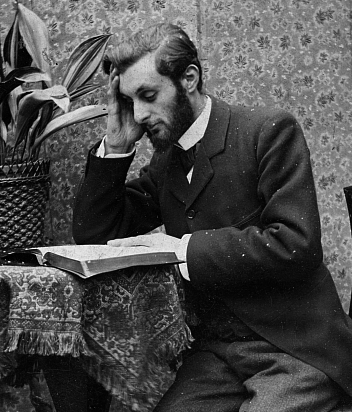 After the death of his mother, Max Isaac Reich (b. 1867) came with his father to England from Berlin, Germany, to live with his stepmother, an orthodox Jew. Attending synagogue, he early discovered the glory of the LORD and the faithful traditions of his Jewish fathers. But one day he was faced with an intriguing challenge when, employed as a printing apprentice at a London firm, he asked foreman John Crane about the meaning of life. Crane simply responded: “Jesus.” Not long after that Reich heard one of the daughters of William Booth, founder of the Salvation Army, proclaim the love of Jesus, further piquing his ruminations. If that were not enough, D.L. Moody, famed American evangelist, preached forcefully during a London crusade, shaking the entire city. Though Reich was forbidden to attend, he relished the warm, pious atmosphere generated by the revival. At last he realized that Christ is “…the completion and fulfillment of all that was best and holiest and highest in the faith of my beloved people.”
After the death of his mother, Max Isaac Reich (b. 1867) came with his father to England from Berlin, Germany, to live with his stepmother, an orthodox Jew. Attending synagogue, he early discovered the glory of the LORD and the faithful traditions of his Jewish fathers. But one day he was faced with an intriguing challenge when, employed as a printing apprentice at a London firm, he asked foreman John Crane about the meaning of life. Crane simply responded: “Jesus.” Not long after that Reich heard one of the daughters of William Booth, founder of the Salvation Army, proclaim the love of Jesus, further piquing his ruminations. If that were not enough, D.L. Moody, famed American evangelist, preached forcefully during a London crusade, shaking the entire city. Though Reich was forbidden to attend, he relished the warm, pious atmosphere generated by the revival. At last he realized that Christ is “…the completion and fulfillment of all that was best and holiest and highest in the faith of my beloved people.”
He continues, “…Upon that confession it seemed as if a weight had been lifted off my heart and mind, and I felt as though the Father Himself had come forth and kissed me.” His conversion occurred on a Sabbath evening, Midsummer’s day, 1884. Ostracized by his Jewish friends, he was blessed to have been quickly taken under the tutelage of John Galway McVicker of the Plymouth Brethren, who encouraged his young disciple to study the life of Christ as it is presented in the Gospels. Reich did so with characteristic diligence. Other notable Brethren who provided lasting influence were George Muller, founder of the English orphanage, and Thomas Newberry, editor of the Englishman’s Greek and Hebrew Bible.
 In 1886 Reich traveled to New York City to preach, then traversed the U.S. and Canada. Two years later he married Mary, “…a true wife and a good mother.” Moving west they ministered to Native Americans on the frontiers of Arkansas, Oklahoma and Texas. With a family of five sons and four daughters, he moved to Scotland in 1892, then ministered in Europe, gaining proficiency in five languages. Long affiliated with the Plymouth Brethren, Reich in 1904 drifted toward Quaker convictions, eventually associating with the Society of Friends for the remainder of his life, though his sympathies encompassed truths treasured by all Christians. Soon he and Mary became overseers of Beth-shan in North London, a rest home for retired Christian workers. They returned in 1915 to the U.S. where he founded the Hebrew Christian Alliance of America, serving as its president from 1921 to 1927. Similarly in 1937, he founded the Hebrew Christian Alliance in London. In 1930 he joined the extension staff at Moody Bible Institute in Chicago, speaking at Bible conferences, preaching and interpreting prophecy, before joining the faculty as full-time lecturer of Jewish Missions. Instructors and students adored his humble, courtly demeanor and well-stocked mind. In addition to classroom teaching, he wrote articles and devotional verse for The Alliance Weekly (which he also edited) and various journals. These pieces were eventually gathered into books including The Deeper Life and Sweet Singer of Israel. As editor he occasionally published pieces by pastor A.W. Tozer and V. Raymond Edman, president of Wheaton College. Wheaton College conferred to Reich an honorary degree in 1936. After a distinguished fifteen-year career at MBI, he died in 1945 following an operation. He is buried beside a Friends Meeting House near his home in Pennsylvania.
In 1886 Reich traveled to New York City to preach, then traversed the U.S. and Canada. Two years later he married Mary, “…a true wife and a good mother.” Moving west they ministered to Native Americans on the frontiers of Arkansas, Oklahoma and Texas. With a family of five sons and four daughters, he moved to Scotland in 1892, then ministered in Europe, gaining proficiency in five languages. Long affiliated with the Plymouth Brethren, Reich in 1904 drifted toward Quaker convictions, eventually associating with the Society of Friends for the remainder of his life, though his sympathies encompassed truths treasured by all Christians. Soon he and Mary became overseers of Beth-shan in North London, a rest home for retired Christian workers. They returned in 1915 to the U.S. where he founded the Hebrew Christian Alliance of America, serving as its president from 1921 to 1927. Similarly in 1937, he founded the Hebrew Christian Alliance in London. In 1930 he joined the extension staff at Moody Bible Institute in Chicago, speaking at Bible conferences, preaching and interpreting prophecy, before joining the faculty as full-time lecturer of Jewish Missions. Instructors and students adored his humble, courtly demeanor and well-stocked mind. In addition to classroom teaching, he wrote articles and devotional verse for The Alliance Weekly (which he also edited) and various journals. These pieces were eventually gathered into books including The Deeper Life and Sweet Singer of Israel. As editor he occasionally published pieces by pastor A.W. Tozer and V. Raymond Edman, president of Wheaton College. Wheaton College conferred to Reich an honorary degree in 1936. After a distinguished fifteen-year career at MBI, he died in 1945 following an operation. He is buried beside a Friends Meeting House near his home in Pennsylvania.
Max Isaac Reich’s papers (SC-91), comprising his Bible, diaries, photographs, sermon notes, verse and journals are archived at Wheaton College Special Collections.
Highway to Heaven – Sesquicentennial snapshot
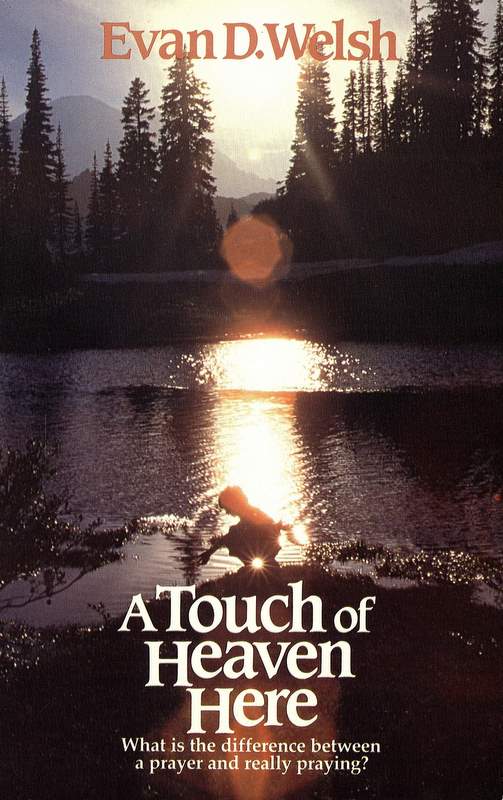 One of my most memorable experiences of the power of our Lord’s prayer [in John 17] happened on a county road in Colorado. Olena Mae and I seldom pick up hitchhikers. We’ve heard too many sad reports of strangers doing harm. But like many rules, we sometimes make exceptions. The night before we had finished an intensive Bible conference at Winding River Ranch near Grand Lake. It had been a good week, a full one, and we were both anxious to be on our way for a few days of vacation. We left a little later than planned, but at last we were rolling down the highway–just at the right moment to spot a man thumbing a ride. He was in his middle years, clean shaven, wearing tattered jeans and carrying only a brown paper sack. Both of us felt we should stop, so I pulled the car over and invited him to ride with us. Olena Mae slid over to make room.
One of my most memorable experiences of the power of our Lord’s prayer [in John 17] happened on a county road in Colorado. Olena Mae and I seldom pick up hitchhikers. We’ve heard too many sad reports of strangers doing harm. But like many rules, we sometimes make exceptions. The night before we had finished an intensive Bible conference at Winding River Ranch near Grand Lake. It had been a good week, a full one, and we were both anxious to be on our way for a few days of vacation. We left a little later than planned, but at last we were rolling down the highway–just at the right moment to spot a man thumbing a ride. He was in his middle years, clean shaven, wearing tattered jeans and carrying only a brown paper sack. Both of us felt we should stop, so I pulled the car over and invited him to ride with us. Olena Mae slid over to make room.
“What is your name, sir?” I asked, “and where are you from?” Without hesitating, the stranger answered, “I’m Orville Pratt, from Carmel, Indiana, near Indianapolis.” “Do you have a family?” “Oh yes, a wife and two married children. My son lives in Indianapolis, and my daughter in Wheaton, Illinois.” “Wheaton! Did you say Wheaton?” “Yes,” the man continued. “Her name is Mary Wilson, just north of Wheaton in Carol Stream.” We were amazed to find our hometown mentioned by this traveler in Colorado. “But where are you headed?” I asked him. “Can’t tell you, ’cause I don’t know myself,” Orville answered. “Maybe Steamboat Springs, maybe Australia.” Our curiosity obviously aroused, we pressed for more of his story. “Does your family know about this?” I asked. “No. I walked off my job last week and didn’t tell anyone where I was going. I’m part owner of a manufacturing business. We make outdoor tool sheds. It’s a good business. . . ,” he said, and his voice trailed off. Olena Mae and I sat quietly for a moment. Gently I proceeded. “Do you have a church home in Carmel?” “I did. A good church, too. I’ve been a deacon and an elder there–but I’m not fit to go to church anymore.” With care I ventured, “Why do you say that?”
“My daughter Mary lost her boy, a four-year-old lad. I loved him. He had a heart problem, and the specialist made a mistake. I cannot forgive that doctor, so I’m in no condition to go to church any more. It’s too much, I can’t face it.” Our hitchhiker friend was crying now. I assured him of our deep concern and more important, of God’s great love for him. We urged him to return to his wife and home, but Orville chose to get out of the car when we turned south for the Redstone Inn. We left him there–a lonely, heartbroken man–thumbing for another ride west. Our drive to the Inn was filled with prayer. Within minutes of our arrival, Olena Mae was on the phone. “You don’t know me,” she told the voice on the other end, “but my husband and I are traveling in Colorado. Earlier this afternoon we picked up your father… “Yes, yes, I know,” Mary Wilson interrupted. “He called an hour ago. He’s coming home!”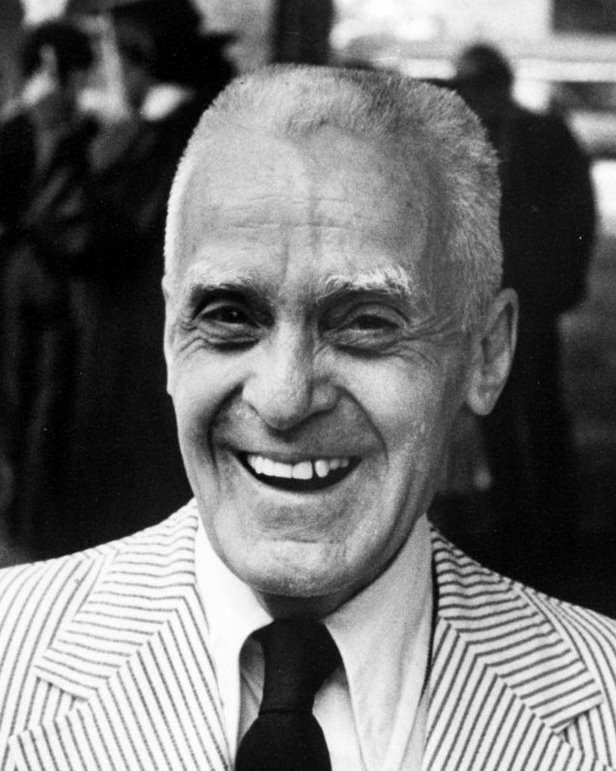 Not long after we returned to Wheaton, Orville called to thank us for our simple advice and reminders of God’s care. He wanted us to visit him, and since I was to speak in Indianapolis at an alumni chapter in the next few weeks, we arranged to spend an evening in the Pratt home. They welcomed us warmly. The next morning, a Sunday, the four of us attended their church, a warm, evangelical fellowship. After church and a delightful dinner together, Orville and I went to the cemetery where his little grandson was buried. I prayed there for Orville and his loved one, and assured him of the promised resurrection and reunion. God was there with arms around us. Later, back at his home, we all thanked God that our paths had crossed on that Colorado highway. A chance meeting? “Holy Father,” Jesus prayed, “keep through thine own name those whom thou hast given me, that they may be one, as we are.” Excerpt from Evan Welsh, first chaplain of Wheaton College, A Touch of Heaven Here (Tyndale: Wheaton), 1985.
Not long after we returned to Wheaton, Orville called to thank us for our simple advice and reminders of God’s care. He wanted us to visit him, and since I was to speak in Indianapolis at an alumni chapter in the next few weeks, we arranged to spend an evening in the Pratt home. They welcomed us warmly. The next morning, a Sunday, the four of us attended their church, a warm, evangelical fellowship. After church and a delightful dinner together, Orville and I went to the cemetery where his little grandson was buried. I prayed there for Orville and his loved one, and assured him of the promised resurrection and reunion. God was there with arms around us. Later, back at his home, we all thanked God that our paths had crossed on that Colorado highway. A chance meeting? “Holy Father,” Jesus prayed, “keep through thine own name those whom thou hast given me, that they may be one, as we are.” Excerpt from Evan Welsh, first chaplain of Wheaton College, A Touch of Heaven Here (Tyndale: Wheaton), 1985.
The Fourway Test
One of the most influential philanthropists of Evangelicalism in the mid-twentieth century was Herbert J. Taylor. Taylor, born in in Pickford, Michigan in 1893, had been educated at Northwestern University and began a career in business, initially in Oklahoma. After a time in the Navy during World War I Taylor began working for Jewel Tea Company (later Jewel Food Stores), eventually becoming an executive in the company. In 1933 Taylor was “loaned” to Club Aluminum Products, a door-to-door kitchen products sales company which was started in the early 1900s, when the company went into bankruptcy. Upon taking over Club Aluminum Taylor found that the business practices at the company were not above reproach and sought a way to turn the company around financially and ethically. While at Club Aluminum Taylor created a simple ethical code that became known as The Four Way Test. The test consisted of four short questions:
- Is it the truth?
- Is it fair to all concerned?
- Will it build goodwill and better friendships?
- Will it be beneficial to all concerned?
This code, created in 1932, established a common working environment for Club Aluminum and helped make the company profitable, trustworthy and strong. 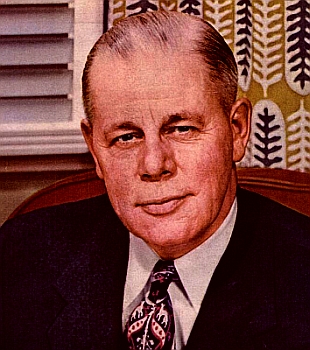 Within several years the company was out of debt and became a multi-million dollar company.
Within several years the company was out of debt and became a multi-million dollar company.
During this time Taylor was a member of the Chicago Rotary Club and eventually became president of the club. And in 1944 he was selected International Director of Rotary. It was then that he offered the test to Rotary. The organization adopted The Four Way Test and has promoted it around the world to encourage an ethical life. It remains a central part of The Rotary despite some who criticized Taylor’s (and Rotary’s) creation of an official “moral code.” Some struggling with the objectification of “truth” and seeking to promote truth’s subjectivity.
From the profits of Club Aluminum Taylor founded the Christian Workers Foundation (CWF) in 1939 and it has helped fund a number of evangelical Christian organizations. Taylor was personally interested in youth work and served on the boards of several youth-oriented organizations like InterVarsity Christian Fellowship, Youth for Christ, Young Life, Child Evangelism Fellowship, Christian Service Brigade and Pioneer Girls. The Christian Workers Foundation continues Taylor’s interests through financial support to many of these organizations.
Herbert Taylor died in 1978. It is said that when the American National Business Hall of Fame wished to honor Taylor a few years after his death they contacted the owners of Club Aluminum to find out information about Taylor. A spokesperson for the company had no knowledge of Taylor.
Dr. Hudson Taylor Armerding (1918-2009) — Tender Warrior
Dr. Hudson Taylor Armerding, performing with characteristic distinction his duties as WWII Navy soldier, husband, father, preacher, professor, writer and academic administrator, provided for succeeding generations a stellar template of Christian manhood. Stu Weber, former Green Beret, pastor and author of the bestselling Tender Warrior (1993), defining the core principles of the Promise Keepers movement, relates an impactful encounter with Dr. Armerding during the late 1960s:
I was a freshman in college. It was winter on the Chicagoland campus of Wheaton College. Late winter. Cold, wind-blown, drifting snow, dead winter. A lot like my soul right then – lifeless. A combination of things had thrown me into a tailspin. It was my first time away from home for an extended season. Away from the girlfriend who would someday become my wife. I’d been disappointed by the winter sports season. I was fighting the fierce deadlines of academia. But worst of all – and for the first time in my rather sheltered life – I found myself reeling from the intellectual loss of my faith.
Never in my life had I felt so disoriented. So alone. I couldn’t sleep. Couldn’t study. Couldn’t speak with anyone. I could only walk, kick rocks, and commiserate with the silent, frozen landscape. That’s what I was doing about midnight. I stumbled aimlessly across the deserted center of campus, lost in myself – a terrible place to be. Then, out of nowhere, I was touched by a Tender Warrior. Literally. Without any inkling whatsoever that there was anyone else alive out there, I felt a hand on my shoulder.
A voice fought its way through the wind. “Could I be helpful to you?”
I looked up into the face of Dr. Hudson Armerding, the great-hearted president of Wheaton College.
Apparently he had stayed late in the office that night. I still don’t know how he found me. Had he seen me wandering in the darkness? Had he felt my pain and desolation from a second-floor window? I don’t know how he got there, but there he was – at my side – a four-sided tower of strength. The king in him bore the weight of the college on his shoulders. The warrior in him fought powerfully through the blood-draining battles facing any college president in the sixties. The mentor in him taught us history in class, the Scriptures in chapel, and life in general. And the friend in him reached out and drew in a hapless freshman wandering in a deep, months-long sleep. He invited me into his home. We walked the distance together. There in the warmth of his living room, with everyone else in the house long asleep, he fixed two cups of tea. We talked. And talked. He became my friend. He still is. One of the half dozen men who have marked my life, Hudson Armerding will always be the consummate King-Warrior-Mentor-Friend to me.
The four pillars of masculinity were balanced in Dr. Armerding. Like four strands of steel, they were woven together to form a cable that is the spine of masculinity. A “good man” is the balance of the four. A good warrior is also the sensitive lover. A Tender Warrior. A good friend is always a helpful mentor. The four are inseperable in a good man. In balance, there are every man’s purpose, every woman’s dream, and every child’s hope.

